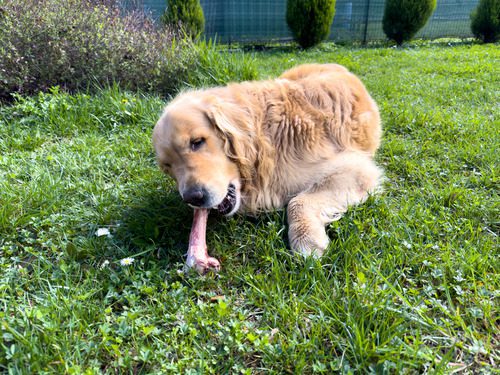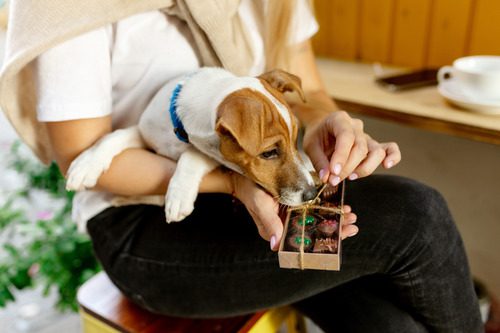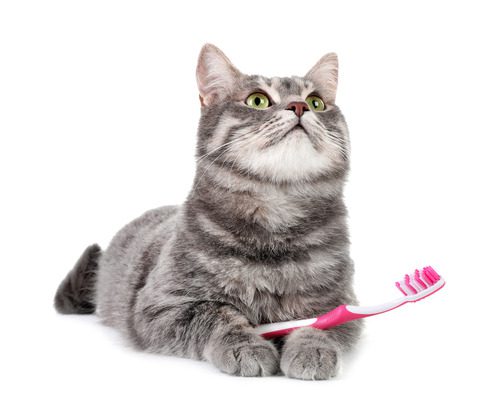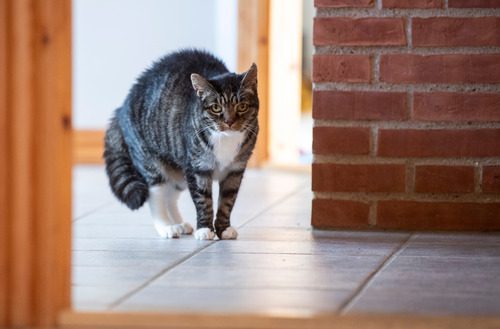Signs of a Blocked Cat: What to Look Out For
Did you know cats can suffer from urinary blockages? A urinary blockage can be a very dangerous condition in a cat, and it’s important to learn how to recognize the symptoms and signs of a blocked cat so you can respond quickly if it happens to your pet.

When it comes to this condition, Chief Veterinary Officer and Founder of Heart + Paw, George Melillo, says, “This is a particular problem for male cats who have a much narrower urethra that is quite prone to blockage. Many pet owners think their cat is constipated when in fact there is a urinary blockage.”
6 Common Signs of a Blocked Cat
In the article below, you’ll find out more about the most common symptoms of urinary blockages in cats. You’ll learn which of these symptoms are the most serious and understand more about how to tell when your cat may be dealing with this crisis as well. This is a life-threatening condition for cats, so if you notice any of the signs mentioned below you should seek veterinary care as soon as possible.
Below are some of the most common signs of a blocked cat:
Bloody, Painful Urination
One of the first symptoms most pet owners notice when it comes to urinary blockages in their cat is blood in the urine. When scooping the litter box, check frequently to see if you notice any red pools or streaks in your cat’s urine, as this is an early indicator of urinary blockage.
Painful urination is another sign. Cats may cry or yowl when they try to urinate because of how much it hurts if they are suffering from a blockage. Watch your cat’s litter box behavior closely if you suspect they have this condition.
Straining to Urinate or Straining but Unable to Urinate
If your cat frequently goes into the litter box and is visibly straining (with or without crying) only to produce a little bit of urine, this is a good indicator that they have a urinary blockage. On the other hand, if they strain significantly but cannot urinate at all, this is another sign to look out for.
Both of these signs mean something is wrong with your cat’s urinary tract. More often than not, the issue is a blockage; however, the problem could also be kidney or liver disease, cancer, or other problems as well. Only a vet can tell you for sure.
Restlessness, Crying, and Hiding
Cats who are in pain exhibit restlessness, especially when they are both in pain and unable to urinate. If your cat is restless and cannot settle down, this could be another sign of a blocked cat. If they are also crying, especially when they are in or around their litter box, this can further signify the same problem.
Hiding may also let you know your cat is in pain. If they are hiding under furniture frequently and this is not normal behavior, this may be a good indicator that they need to see an emergency vet. Keep in mind, however, that these symptoms of pain may be related to a variety of illnesses and conditions in cats, and that they do not necessarily mean your cat has a urinary blockage.
Loss of Appetite and Vomiting
Cats who are sick with a urinary blockage may have a loss of appetite because they do not feel like eating anything. Additionally, they may vomit due to the nausea caused by the blockage.
Keep in mind, however, that loss of appetite and vomiting are both associated with many cat illnesses and conditions. These symptoms alone can’t tell you that your cat has a urinary blockage, but they can let you know your cat has something going on that requires medical attention.
Pottying Outside the Litter Box
If your cat is usually very good about going potty in the litter box—as most adult cats are—you can easily know something isn’t right if they start urinating outside the litter box instead. Some cats who have urinary blockages may also defecate outside the litter box as well, simply because they begin associating the litter box with a source of pain.
Consider whether or not this problem could be behavioral rather than medical. However, if your cat has other symptoms on this list along with inappropriate urinating, a urinary blockage is the likely culprit.
Additional Risk Factors
Male cats are considerably more likely to have a urinary blockage than female cats, although it is still possible for female cats to have this problem too.
Additionally, cats from one to eight years of age are more likely to have urinary blockages. Once again, however, older cats can suffer from this condition as well, so don’t rule it out entirely even if your cat is past the common age range.
Bring Your Pet to Heart + Paw for Any Signs of a Blocked Cat
By learning to recognize these signs and symptoms, you can take your cat to the vet or emergency vet as soon as a urinary blockage arises. The sooner you react to the situation and get your cat the medical care he needs, the more likely he will be to recover fully from this condition.
Be sure to speak to your vet for more information about dietary management of urinary blockages, too. Many cats need to be put on a special diet that reduces the risk of blockages of the urinary tract system.
If your pet is exhibiting any of the signs of a blocked cat mentioned above, you should take them to the veterinarian right away, especially if they’re experiencing more than one of these symptoms. This is a very serious condition and one that should be treated as soon as possible. Whether you take your pet to a veterinarian or an emergency vet, getting to bottom of this condition and developing the best course of treatment is going to be the most important thing you can do for your pet.
Recent Posts
Can Dogs Eat Ham?
Ham is a popular meat found on many dinner tables, especially during the holidays. As a dog…
8 Signs and Symptoms of Diabetes in Dogs
Caring for a dog means being tuned in to the subtle changes that can reveal their overall…
Why Dogs Can’t Eat Chocolate and Tips for Keeping This Sweet Treat Out of Their Reach
Chocolate is a beloved indulgence for us, but for our dogs, it’s a hidden danger that can…
Why Cat Teeth Cleaning is Important For Your Pet’s Health
As a cat owner, you know how important it is to care for your feline friend’s overall…
Cat Body Language: A Guide To Understand What Your Cat is Telling You
Imagine trying to communicate without words, relying solely on subtle gestures, glances, and movements. This is how…
About Us
Heart + Paw was founded in 2018 by Chief Veterinary Officer Dr. George Melillo, who currently serves the Mid-Atlantic area. Heart + Paw offers a combination of veterinary care, pet grooming, and dog daycare to help be a resource in your pet parenthood journey.
We'd Love to Meet Your Four-Legged Friends
Find out how the friendly veterinary team at your local Heart + Paw can help your pets live longer, healthier lives by searching for a location near you.





